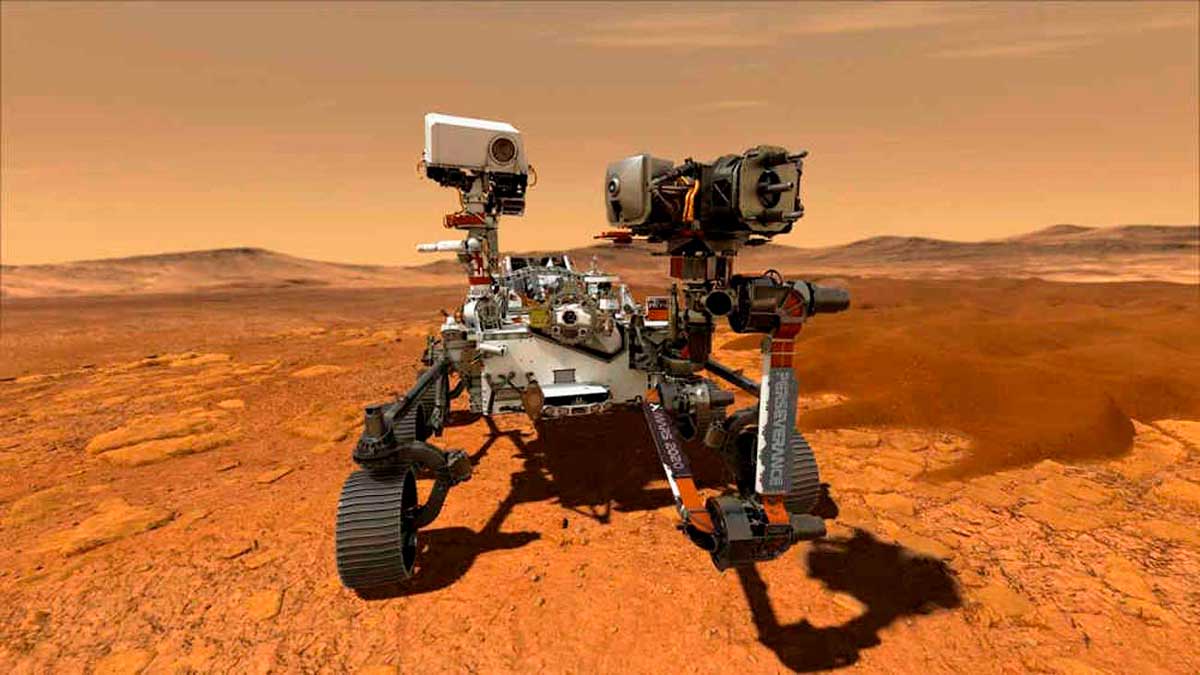NASA’s rover recordings have added a new element to humanity’s knowledge of Mars. If we ever knew what Mars was like, Now we know what it looks like.
Equipped with two microphones, the Perseverance rover provided NASA with approximately five hours of detailed audio recordings Hear the sounds on the red planetand even making some of them publicly available.
“It’s as if you were really there,” Baptiste Ched, a planetary scientist who studies data from microphones at the Institute for Research in Astrophysics and Planets in France, said in a statement. “The sounds of Mars have strong bass vibrations, so when you put the headphones on, you can really feel it. I think the microphones will be an important asset for the future science of Mars and the solar system.”
Perseverance is by no means the first rover to be sent to explore Mars, but it is the first to record audio. The microphones used are commercially available, one on the car mast and one on the chassis.
However, the Red Planet, as far as we know, is uninhabited, and its atmosphere is very thin. Therefore, the recordings at first glance seem very boring. Perseverance sounds rolling over pebbles, his lasers beamed from his SuperCam, a creative helicopter flight Occasional wind gusts make up the majority of the recorded sounds.
But for scientists, the information obtained from these audio recordings contains a huge amount of data about the planet and its atmosphere. This is because the sound itself must be transmitted through vibrations in the air. Since the atmosphere of Mars is 100 times less dense than that of Earth, scientists were not 100% sure that their microphones would pick up any sound. And they didn’t catch any of it until April 30, during Ingenuity’s fourth flight.
SuperCam lasers and vapor output augment this data by ensuring that an audible sound can be produced.
This is done thanks to the Mars Environmental Dynamics Analyzer (MEDA), which NASA uses to study the Martian environment and atmosphere, where the rover’s wind sensors and the SuperCam camera help study micro-turbulence, which are minute changes in the air.
“It’s like comparing a magnifying glass to a 100x microscope,” said MEDA principal investigator José Rodríguez-Manfredi, of the Center for Astrobiology (CAB) of the National Institute for Space Technology in Madrid. “From a meteorologist’s point of view, every perspective – detail and context – complement each other.”
Scientists have already made progress in understanding the Martian atmosphere and how it properly propagates, and this was not what was expected.
As early as 2020, NASA assumed that sounds emitted in the cold Martian atmosphere would take a little longer to reach the ear. With an average surface temperature of about -81 degrees Fahrenheit (-63 degrees Celsius), The speed of sound on Mars (about 540 miles per hour, or about 240 meters per second) is slower than on Earth (about 760 miles per hour, or 340 meters per second). This change will likely go unnoticed up close, but it can be noticed from a distance. In addition, Mars’ atmosphere is made up of 96% carbon dioxide, which absorbs high-pitched sounds and prevents them from reaching faraway places due to a process known as attenuation.
But scientists now have to reconsider and, in fact, ignore two of the three models developed to understand how sound propagates on the Red Planet.
“The sound on Mars goes further than we thoughtsaid Nina Lanza, a SuperCam scientist working with microphone data at LANL. “This shows how important it is to do field science.”
But there’s another mundane benefit to having microphones in a rover: maintenance.
Thanks to the microphones, the mission’s engineers could study the operation of a rover in the same way as hearing the sound of a car engine. It is hoped that the data collected in these recordings can be used to study the state of the various components of the rover over time.
“We like to hear these sounds regularly,” said Vandy Verma, chief robotics operations engineer at JPL. “We routinely listen for changes in sound patterns in our test vehicle here on Earth, which may indicate there is an issue that needs attention.”

“Problem solver. Proud twitter specialist. Travel aficionado. Introvert. Coffee trailblazer. Professional zombie ninja. Extreme gamer.”



More Stories
With a surprise in the case: a strange cell phone from Nokia was introduced
PlayStation Stars: what it is, how it works and what it offers to its users | Sony | video games | tdex | revtli | the answers
t3n – Digital Pioneers | digital business magazine